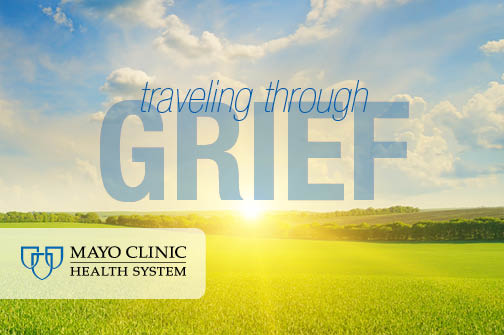From nightmare to recovery: Unraveling the mysteries of PTSD

Waking up screaming from a nightmare, ducking for cover after a loud noise or having all-consuming thoughts of guilt or fear. These and other dramatic symptoms often are shown as depictions of post-traumatic stress disorder in movies or TV shows. Some portrayals are accurate while others are far-fetched.
Post-traumatic stress disorder, also called PTSD, doesn't just happen to characters on the screen. It's a normal, natural response to trauma and happens when the nervous system, which is designed to protect you from danger, gets stuck in the fight or flight response.
People may develop post-traumatic stress disorder when they go through, see or learn about an event involving actual harm, threatened death or serious injury; or have another shocking experience.
Common events that cause PTSD symptoms include:
- Accidents
- Being threatened with a weapon
- Combat exposure
- Life-threatening medical diagnosis or treatment
- Natural disaster
- Physical, emotional, verbal, mental or sexual abuse or violence
The good news is that PTSD is treatable, and many people manage it well or recover from their symptoms. Here's what you need to know about this condition.
Protective factors
Not everyone who experiences or witnesses a traumatic event will develop PTSD. It's unclear why some people develop PTSD while others do not, but the cause is likely a mix of trauma and personal protective factors.
Protective factors are crucial elements that contribute to a person's ability to cope with and recover from trauma. Some examples include support, validation, their current feeling of safety, and whether they have existing coping strategies or can learn them. Having protective factors may help people be less likely to develop debilitating PTSD after a traumatic event or allow them to heal better after a traumatic experience.
PTSD symptoms
Some people experience distressing symptoms for a short time after a traumatic event but get better with time and self-care. For others, the symptoms worsen over time and begin to interfere with daily activities.
PTSD symptoms usually are grouped into four categories:
- Intrusive thoughts
Recurrent and unwanted memories of the traumatic event can cause significant emotional distress or physical reactions. The person may experience nightmares or flashbacks, which is reliving the traumatic event again. - Avoidance
People with PTSD may avoid talking about the event or steer clear of places, activities or people that remind them of the event. - Mood and thought disturbances
This category of PTSD symptoms can mirror depression, with people experiencing hopelessness, negative thoughts about themselves or others, detachment from loved ones, lack of interest in activities, emotional numbness and relationship difficulties. - Reactivity
These symptoms may include being easily startled, always on guard for danger and overwhelming feelings of guilt or shame. The person may be irritable or have angry outbursts. They could have trouble sleeping or concentrating and engage in self-destructive behaviors like drinking too much or taking illicit drugs.
PTSD diagnosis
A thorough examination by a mental health professional is necessary to diagnose PTSD. Often, the counselor will review the person's past for potentially traumatic events or experiences. Then, the counselor will assess symptoms that fall into the four categories outlined above. Each category requires confirmation of specific criteria for an official PTSD diagnosis.
It's important to note that some people may have a few PTSD symptoms but not enough for an official diagnosis of the condition. In these cases, treatment can still be helpful and can guide people toward self-care strategies and coping mechanisms.
Recovery spectrum
Many people are able to achieve remission or experience a decrease of their PTSD symptoms to a manageable level after treatment. Some protective factors are especially helpful during recovery, including having positive social support, using existing or new coping strategies, and developing an awareness of what PTSD is and how to heal.
PTSD treatment involves addressing both the physical and mental aspects of the condition. Treatment plans developed by a health care professional are tailored to meet the needs of each person.
Certain treatments calm the nervous system and help people regain control over their physical responses to triggers. These tactics help the person having an automatic physical response tell their body that a perceived threat isn't accurate. Examples include grounding techniques, breath awareness and body-focused interventions. For example, short and shallow breaths can be signs of the nervous system reacting to a trigger. Through treatment, people can identify this reaction and learn to take slow, breaths which can calm the physical reactions.
Common PTSD treatments include:
- Cognitive processing therapy
An important part of treatment is identifying and challenging negative thoughts and beliefs related to the traumatic event. Cognitive processing therapy helps people with PTSD distinguish between feelings and facts, and develop a more accurate understanding of their experiences, negative beliefs and self-perceptions. - Exposure therapy
This therapy helps people safely experience frightening situations and memories in incremental steps so that their nervous system can realize that situation is not an actual threat. - Eye movement desensitization and reprocessing
Also, called EMDR therapy, this treatment helps with accessing traumatic memories in small, targeted ways with bilateral stimulation. This could be eye movement from side to side, like people do when dreaming and processing images. Other stimulations that could be incorporated include bilateral movements like tapping of hands and bilateral sounds with the use of headphones. These help the person associate the memories with new and accurate information about the trauma. This allows the person to complete the processing of that memory in an accurate way. It can help the person to feel less distress and develop accurate insights about the memories. - Medications
In addition to other therapies, medications may be helpful for people struggling with severe PTSD symptoms. Antidepressants and anti-anxiety drugs may help people in combination with other treatment options. Medications alone are not comprehensive solutions and should be evaluated carefully.
Each person's reaction to a traumatic event is valid, and one person's trauma can't be compared to another's as "better" or "worse." It's normal if one person's reaction and symptoms are different from others in a similar situation. PTSD isn't a sign of weakness, and a person shouldn't be expected to just "get over it." It takes great courage to manage these symptoms.
PTSD is a normal response to traumatic events and appreciating this can help ease self-blame or misconceptions. With a combination of interventions, people can learn to manage their symptoms, challenge negative thoughts, regulate their physical responses and regain control over their lives. Talk with your health care team about your symptoms.
Jackie Richter is a licensed professional counselor in Psychiatry & Psychology in La Crosse, Wisconsin.




